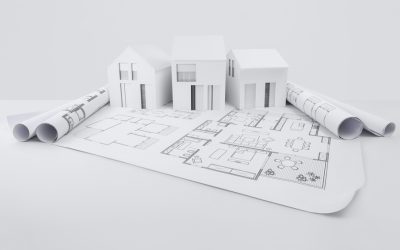If you’re planning to build a new home, temporary housing and expense management are two phases of the process you will want to plan for wisely. Building a custom home is an exciting project, but it often comes with the practical challenge of temporary living arrangements while construction is taking place.
Temporary housing is a necessity for most people during this phase, and managing the cost of it alongside your new home construction loan can feel overwhelming. Here’s how to approach the issue strategically and keep expenses in check.
1. Know Your Construction Timeline — Then Add a Buffer
Before you can plan for temporary housing, get an estimate from your home builder about how long your home will take to complete. Then, assume it will take longer. Weather, material delays, labor shortages, and permit issues can all add time to your build. Adding a 1–2 month buffer to your timeline helps prevent getting caught off guard by unexpected extension costs.
2. Explore Temporary Housing Options Early
Start looking for housing options as soon as your build is confirmed. Your choices will depend on your location, budget, and needs. Some options include:
- Short-term rentals: Fully furnished apartments or homes can be rented month-to-month. These are flexible but tend to be more expensive.
- Extended-stay hotels: These offer amenities like kitchens and often provide discounts for long-term stays.
- RV living: If you already own an RV or can rent one affordably, this can be cost-effective, especially if you can park on your property (check zoning rules first).
- Staying with family or friends: Not ideal for long stretches, but if someone is willing, this can save a lot of money.
- Renting a small apartment or home: Signing a short lease (6–12 months) may offer better value than flexible housing. Just be mindful of potential early termination fees if your home finishes early.
3. Budget for Temporary Housing as Part of Your Build Plan
Temporary housing is a cost that should be factored into your broader construction budget. Many people overlook it or assume they’ll “figure it out later,” only to be hit with high unexpected expenses. Treat it like any other major line item.
Start with a clear monthly budget. Then, multiply it by your expected timeline (including the buffer). Also, factor in utilities, internet, moving/storage costs, and possible duplicate expenses like maintaining your current mortgage or rent while paying for temporary housing.
4. Understand What Your Construction Loan Covers
New home construction loans are short-term loans used to fund the building process. They typically cover materials, labor, permits, and sometimes land costs. Most do not cover personal living expenses like temporary housing. That’s important. Don’t assume your construction loan will pay for your rental or hotel stay.
However, once your construction is complete and the loan converts into a permanent mortgage (known as a construction-to-permanent loan), some lenders allow you to roll certain costs into the final mortgage. Talk to your lender about this possibility and understand your options upfront.
5. Consider Using Loan Draws Strategically
Construction loans are usually paid out in stages, called “draws,” based on completed work. While these are primarily for construction expenses, smart cash flow management can free up some of your own funds for temporary housing. For example, if a draw covers a large chunk of costs, you may be able to avoid dipping into your personal savings for a while, allowing you to use that money for living expenses.
Some lenders allow “interest-only” payments during construction, which can help reduce your monthly loan burden while you’re also paying for housing.
6. Sell Your Current Home Wisely
If you’re selling your current home to help fund the build, timing is key. Selling early gives you cash flow but forces you into temporary housing sooner. Selling later allows you to stay put longer but may complicate financing if you’re relying on sale proceeds.
Some people sell their home and then rent it back from the buyer for a few months. This can buy you time in a familiar space without double housing costs. Discuss with your real estate agent whether this is feasible in your market.
7. Store Your Belongings Efficiently
If you’re moving into a furnished rental or staying with others, you may need storage. Budget for this as part of your temporary housing costs. Compare traditional storage units with portable storage pods, which can be dropped off at your new property once the build is complete.
8. Track All Expenses Closely
Temporary housing costs should be managed carefully. Be sure to track rent, utilities, transportation (if your temporary housing is farther from work/school), storage, and any additional fees. Keeping close tabs helps avoid surprises and allows you to adjust quickly if costs start building up.
Remaining Flexible & Staying on Top of Things
Building a home involves many moving parts, and temporary housing is just one of them. But it’s a major piece of the puzzle — both logistically and financially. Start early, budget smart, and communicate with your builder and lender. The goal is to get through the construction phase without overextending yourself or running into housing issues just when your dream home is nearly ready.
Crafting Success Starts with the Right Builder
A successful custom home hinges on choosing the right home builder. An experienced, skilled builder does more than just construct your house — they manage timelines, coordinate subcontractors, navigate permits, and help prevent costly delays. Their ability to keep the project moving smoothly directly affects how long you’ll need temporary housing and how efficiently your loan funds are used. Simply put, a strong builder relationship is the foundation for a well-executed, on-schedule, and less stressful build.
Contact Picklo Homes today at 281-252-4447 to discuss how we can help make your vision of home a reality. As a trusted, highly skilled custom home builder, we bring the experience and craftsmanship needed to guide you through every step — from the first plans to move-in day.



